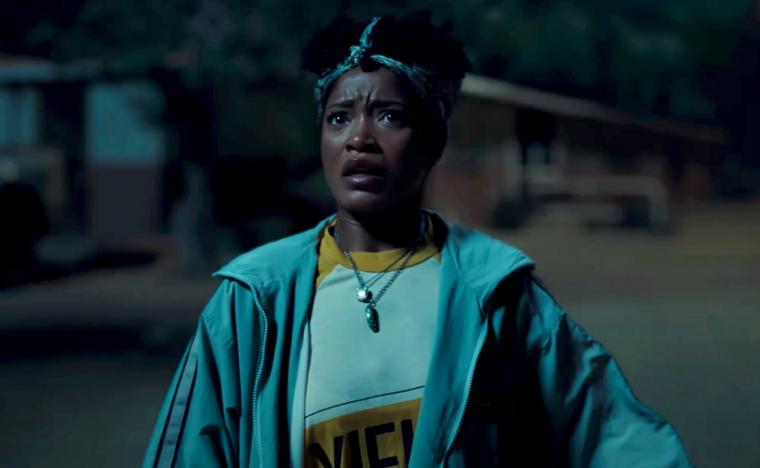
Keke Palmer in Nope
NOPE
Did you know that UFOs (unidentified flying objects) are now, instead, routinely classified as UAP (unidentified aerial phenomena)? Until seeing Jordan Peele's Nope, I had no idea – just as I had no idea that the writer/director/producer could so successfully harvest the Spielberg/Shymalan oeuvres for his specific needs, or that the image of a monkey staring directly into the camera lens could so thoroughly freak me out.
It's inevitable that Peele's followup to 2017's peerless Get Out and 2019's marvelous yet more divisive Us will result in widely, loudly varying opinions. (The mind boggles at what the Internet brigade might have unloaded back when Spielberg's E.T. was followed by his cornball Twilight Zone segment, and then a Raiders sequel, and then The Color Purple.) But it would be hard to argue that this grabby, genre-hugging work isn't the product of a major talent who clearly loves the sh-- out of movies, and if Peele is less generous than usual with the stinging social commentary, he also hasn't previously delivered this kind of hilarious, nerve-shredding, blockbuster-scaled fun. While there are serious themes here for the taking, they're not inherently tied to the experience of this massively entertaining flip slide to Close Encounters of the Third Kind. The tagline for Spielberg's film was “Watch the skies.” Peele's response is “Maybe don't.”
Two central images open Nope before the main narrative gets underway – one nearly motionless, the other nothing but motion. The first is a stationary shot of a brightly lit soundstage, one whose blinking red “APPLAUSE” sign suggests that it's being used to shoot a sitcom. Yet there's no studio audience in sight. Barring the mostly hidden human body lying on the floor, the only sign of life is the chimpanzee that's aimlessly wandering the disheveled set covered in blood. He lets out a few grunts, randomly paws at the furniture, and eventually takes a seat, seemingly exhausted by a recent workout. That's when he turns his head and looks directly at us. I hasten to add that this will wind up being only the second-scariest instance of this monkey staring down the camera.
Nope's other introductory image is 19th-century inventor Eadweard Mybridge's famed moving picture of a cowboy on horseback – a real-life remnant of movie history widely thought to contain the first actual movement ever replicated on film. The rider's name has been lost to the past, but in Peele's imagining, he was the great-great-great-grandfather to the Haywood siblings O.J. (Daniel Kaluuya) and Emerald (Keke Palmer), whose father Otis (Keith David) has long run a Southern California ranch where horses are bred, raised, and trained for service in Hollywood. With CGI effects so frequently making live animals unnecessary, Otis' business has seen better days. Yet monetary issues prove irrelevant when compared to the issue of what might be scooting above and around the ranch, at least based on the unexplained downpour of metallic objects that causes minor harm to the horses and major harm to Otis, and implies that the Haywards are in close proximity to a UFO. Sorry: UAP.
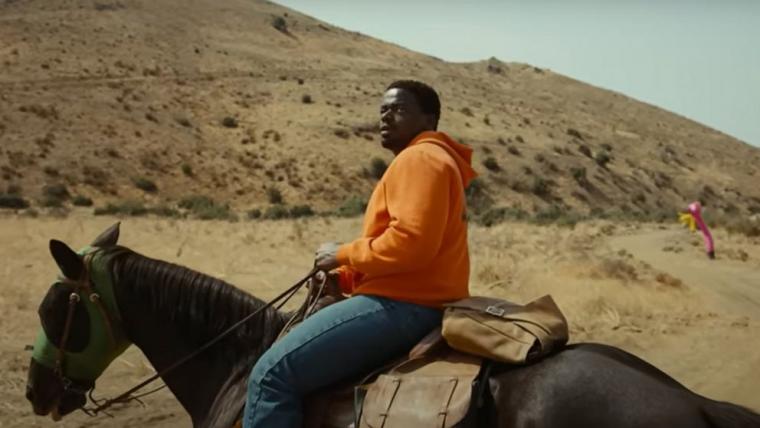
Although Peele's latest does boast one significant narrative detail that I won't reveal, Nope isn't really a movie that can be undone by spoilers; there are no flabbergasting twists of character along the lines of those in Get Out and Us, and the film's final half-hour is about as straightforward as summer blockbusters get. Still, the caginess of the gradually released trailers – Is it sci-fi? Horror? A Western? A spoof? – makes me want to be as circumspect as possible regarding specifics. In lieu of a continued synopsis, then, let me simply say that yes, Peele's expansive mash-up is all of those things. And after O.J. and Emerald recruit a sardonic tech geek (Brandon Perea's Angel) and fastidious cinematographer (Michael Wincott's Antlers) to definitively capture their otherworldly visitor on film – to get, as Emerald calls it, “the Oprah shot” – Nope also becomes a fierce tribute to the art of moviemaking … as well as a pointed reminder of the prelude's chimp. Some beings, as should be apparent, don't necessarily want their pictures taken.
Peele, meanwhile, luxuriates in his particular beings' camera shyness, teasing the delayed eventuality for all it's worth. As with the shark in Jaws, the mother ship in Close Enclunters, and the aliens in Shymalan's Signs, we're only given fleeting hints of the inhuman interloper that lies just out of sight, its presence felt through accompanying effects: detritus and, in one ghastly instance, gushers of blood falling from the sky; faraway shrieks coming from either the UAD or whatever's in the UAD; electrical devices slowly powering on and off. (In a topnotch nod to his penchant for playing familiar radio tunes su-u-uper slowly – most unforgettably “Got 5 on It” in Us – Peele, at one point, gives us what sounds like a 16 RPM take on “Sunglasses at Night.”) Nope's director makes these early sequences both intense and riotous, and sometimes blends your reactions so effectively that you truly don't know whether to laugh or shriek. The scene of O.J. refusing to engage with the shadowy creatures in his barn was so unexpected, and so queasily giggly/creepy, that I was left literally slack-jawed and couldn't do either.
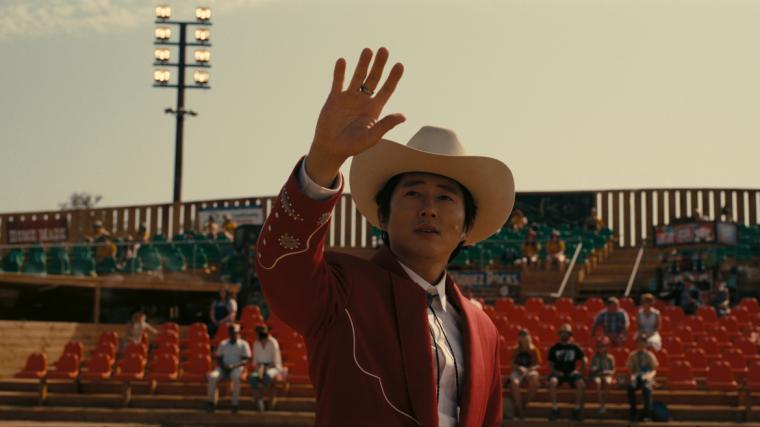
But while a number of viewers are bound to be disappointed when the storytelling turns more traditional in the movie's final third, Peele proves just as inspired with the sorts of outsize wonders that his blockbuster-minded forebears are generally revered for. Blessedly, he hasn't misplaced his gift for eliciting fresh, inventive portrayals from wholly confident actors. Kaluuya, offering a brilliant comic riff on a stoic Gary Cooper cowboy, and the ebullient live-wire Palmer are effortlessly convincing as loving, goading, constitutionally dissimilar sibs; Perea (in a name-making comic turn) and the sandpaper-dry Wincott steal nearly all of their scenes; there's a subtly juicy role for Steven Yeun as the adult version of the child star Ricky “Jupe” Park who witnessed that monkey's on-set meltdown and has no compunction about using his trauma for profit. Yet it's Peele's unanticipated – though fundamentally unsurprising – talent for spectacle, grandeur, and knock-your-socks-off set pieces (with immeasurable aid provided by cinematographer Hoyte van Hoytema) that's especially bracing. If you didn't know better, you could easily mistake Nope for a legit Spielberg or Shymalan – except that, aside from Jaws, it's funnier than those helmers' outings, and more unnerving, to boot.
And oh, the memorable moments Peele gives us! The X-ray scan showing the precise cause of Otis' head injury. The lens-hugging insect that ruins a perfect Oprah shot. Jupe's description of the mid-'90s Saturday Night Live sketch detailing his sitcom's horrifying claim to fame. (I would kill to see a reenactment of that bit.) The gargantuan helium balloon with the raised thumb. The veil-covered theme-park attendee with the nightmarishly lip-less smile. O.J., unlike Close Encounters' Richard Dreyfuss, thinking twice (“Nope.”) about making eye contact with whatever is hovering over his vehicle. And the single-scariest shot of that chimp staring at the camera, the sheer tablecloth separating him and us not enough to offer any protection – not even emotional protection. The film is Nope. Will I inevitably re-watch it with the same frequency earned by Get Out and Us? Yup.
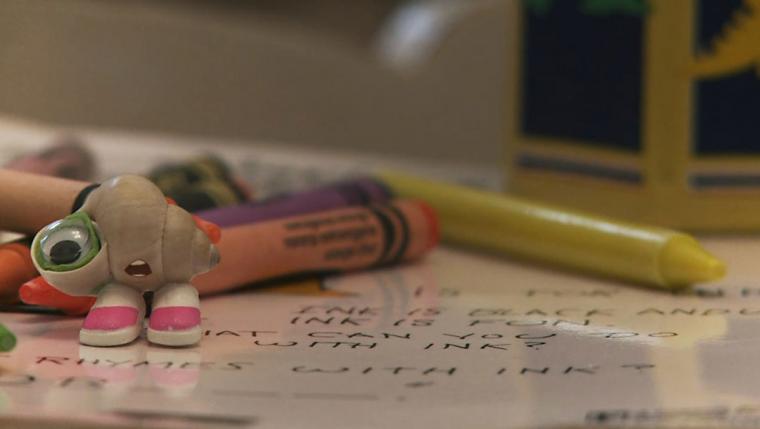
MARCEL THE SHELL WITH SHOES ON
During my time spent at Iowa City's FilmScene this past Friday, I saw something I can't recall ever before seeing at either the venue's Chauncey Hotel locale (where I was at) or its sister site on the neighboring Ped Mall: children. FilmScene does routinely present programming for young audiences, and its annual animation camps are, I hear, terrifically popular. But because the specialty titles I tend to view are almost never family-friendly ones, I truly don't remember there being a single soul under 18 at any previous FilmScene screening over nearly eight years. That streak, however, understandably ended with Friday's area debut of Marcel the Shell with Shoes On, and I couldn't have been happier that it did, given how refreshing it was to hear kids laughing at the on-screen antics just as joyfully as we adults were. It didn't, however, appear to be the kids who were also routinely, mostly discreetly crying.
As tens of millions of YouTube watchers are aware, Marcel's journey began with the anthropomorphic, one-inch-tall shell (with shoes on!) starring in a three-minute video mockumentary posted in 2010 by director Dean Fleischer Camp and co-writer Jenny Slate, the latter of whom also voiced the witty, resourceful, eternally optimistic creature. This literally minimalist comedy was a word-of-mouth smash that landed the short inclusion in the 2011 Sundance Film Festival and led to two followup videos and a book … and I had honestly never heard of the phenomenon until a preview for the feature film appeared before my April screening of Everything Everywhere All at Once. For a newcomer to the world of Marcel, the trailer was strange enough: “Ummm … it's about a shell that talks? And walks? And gets interviewed by Lesley Stahl on 60 Minutes?” Yet even stranger was that this presumed family entertainment – one that followed the well-worn, kiddie-flick blueprint of a non-human searching for his long-absent family – was being released by A24, the studio behind Everything Everywhere that has also been home to Ari Aster and the Safdie brothers and other filmmakers whose works are decisively not meant for children. Would Marcel, as voiced in Slate's endearingly scratchy helium-speak, wind up on a beach solely populated by The Lighthouse's Robert Pattinson and Willem Dafoe? Would he be affixed to a necklace worn by Swiss Army Man's Paul Dano?
My fears subsided when I got home from the screening and, in the first among dozens of viewings since, promptly watched the three Marcel shorts – each of them sunny, hysterical, and successively more poignant – before spending the next three months demanding that all my friends and relatives do the same. And my subsequent fear, that three minutes of Marcel the Shell video bliss would prove painfully inadequate for the needs of a 90-minute big-screen movie, were promptly shattered by director Fleischer-Camp's feature-length version, a work that retains all the charm and hilarity of the shorts yet gives the title character, and Fleischer-Camp himself, an immeasurably wider canvas on which to paint and play.
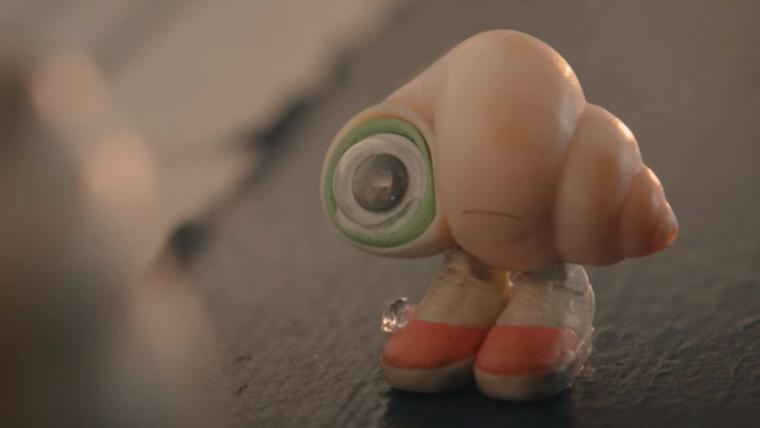
Yet the movie doesn't feel like an A24 anomaly, either. For all of the traditional 21st-century-family-comedy fun it provides – and the figurative and literal gag that found Marcel vomiting from car-sickness seemed to work for all demographics – Fleischer-Camp's offering has astute, insightful things to say about mortality, abandonment, the limits of personal growth, and the toxicity of celebrity culture. When they weren't laughing, the adults at my screening appeared to watch the goings-on with rapt, dedicated attention. When they weren't occasionally venturing out to the FilmScene lobby for presumed restroom breaks, the kids appeared to, as well. Like Pixar's Inside Out, Marcel the Shell with Shoes On is the rare family outing that, despite the silliness, might easily, hopefully lead your children to ask a few serious questions.
But first: the silliness! As in the shorts, but seen this time, Fleischer-Camp plays Dean, a burgeoning auteur who has met Marcel during his stay in a suburban home that's been repurposed as an Airbnb. (Gradually, we realize that Dean is staying there while separated from his wife – a delicately addressed point later explored in greater detail.) Dean begins interviewing Marcel and filming his daily life, believing that a mini-doc on the bright, chatty being would be a hit on YouTube, and these early scenes, while enjoyable, did give me pause. Despite the goofy treat of watching Marcel travel from room to room in a hollowed-out tennis ball, what we were shown wasn't much different from what we saw in the videos, and was sometimes identical to the letter: Marcel “walking” his dog substitute, the ball of lint he's named “Alan”; Marcel freaking out in the presence of Dean's actual dog; Marcel amusing Dean with a number of obviously well-rehearsed, mildly self-effacing jokes. (“Guess what I use to tie my skis to my car. A hair.” “Guess what my skis are made of. Toenails from a man.”)
Yet Fleischer-Camp, Slate, and their co-screenwriter Nick Paley have a plan, because it turns out that the repetition is absolutely intentional, and the rest of their feature film is devoted to what happens after the Marcel shorts that we're acquainted with in real life become a hit with the public. Dean and Marcel quickly realize that they could use their newfound popularity to help find Marcel's family – a hefty crew of similar beings who were likely dropped into a suitcase when the house's owner emptied out his sock drawer. But while Marcel makes online appeals regarding their whereabouts, he's chastened to find that the YouTubers who find him “so cu-u-u-u-ute!” have no interest in actually aiding him – not when they can instead pose for selfies in his front yard or add meaningless drivel and emoji in the video's comments section. (One of Marcel's best bits here finds him irate that so many commentators sign their Internet missives with a meaningless “peace & love,” leading the shell to wonder if he should end his own correspondence with “war,” just for the change of pace.) And what happens after that really shouldn't be given away, except to say that it concerns an eye-opening road trip, the aforementioned Stahl, and the needs of Marcel's only relative left: his fellow shell Grandma Connie, who's voiced by Isabella Rossellini (“She's from the garage … that's why she has that accent”) and clearly suffering from Alzheimer's.
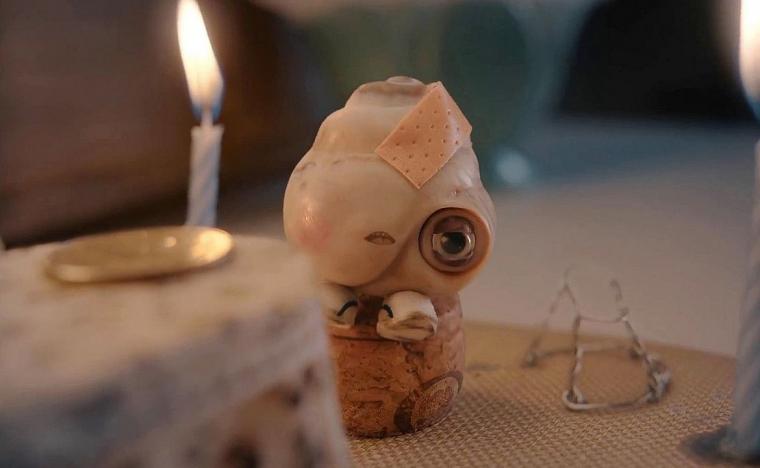
Marcel fans know that Jenny Slate's readings are sublime: the craft and intelligence behind her sneaky/funny deliveries keep the character from ever being overtly sugary, and her childlike cadences oftentimes waylay you with emotion right when you're expecting a punchline. (“Guess why I smile a lot. Because it's worth it.”) What Rossellini does as Grandma Connie, though, is miraculous. An old-world figure of maternal wisdom who's sharp and sassy enough to tell Dean when he just needs to leave the room, please, Connie is forever on the point of vanishing without ever losing total control of her authority. Rossellini, meanwhile, voices Connie with such earthy lack of sentiment and poetic richness of personality that you immediately understand why Marcel would rather ditch his dreams of a better life than risk losing her. (In its haunted, faraway way, Rossellini's reading of Connie's “Better better better better better” is akin to a great King Lear's delivery of “Never never never never never.” I'm not kidding.)
In truth, and even though it never felt too long for its running length, I did have a few momentary issues with Fleischer-Camp's movie. Although Stahl's introduction to her Marcel interview was perfectly 60 Minutes-y, it also broadly underscored all the inherent qualities of the character – his decency, his tenacity, his ability to find hope in hopeless situations – that the shorts pulled off without added, unnecessary back-patting. And while the final scenes are enormously satisfying, there may also be too many of them; the film lands on what would seem a perfect laughter-through-tears image and then continues for more (admittedly entertaining) detours than it perhaps needed to. Yet these are quibbles. Marcel the Shell with Shoes On is an unmitigated delight, and while it's more than worth a drive to Iowa City, I certainly hope the movie soon secures a Quad Cities booking at a theater near(er) you. [July 26 author's note: As of this Thursday, it's playing in Davenport!] Kids will adore it. And adults, who should also adore it, will likely love learning that – thank you, A24! – those little curly hairs that amass on the rim of your bathtub drain might actually serve a purpose for someone.
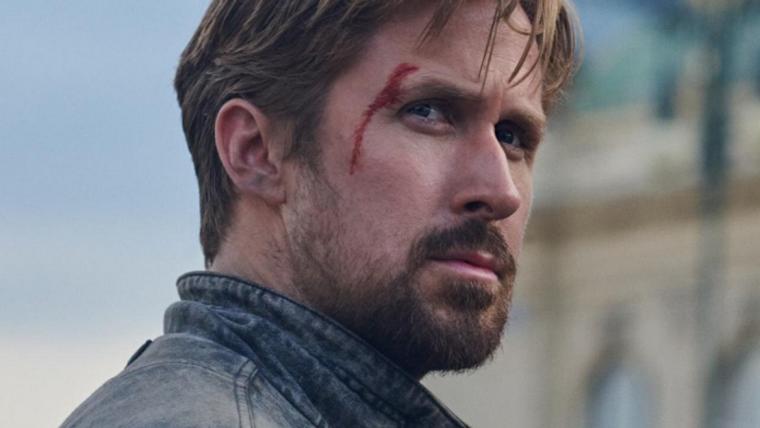
THE GRAY MAN
According to its Wikipedia entry, the budget for Netflix's original action thriller The Gray Man was $200 million. The service's widely reported financial difficulties of late are suddenly far easier to understand. How does one-fifth of a billion dollars get spent on something this visually slapdash, and this resolutely unmemorable? I mean that last part literally. It's been two days since I saw directors Anthony and Joe Russo's tedious throwaway that pits Ryan Gosling's newbie spy against Chris Evans' sinister ex-CIA agent, and excepting a typically tart performance by a typically ill-used Alfre Woodard, I barely remember a thing about it.
Based on the first in a series of Mark Greaney books, and obviously intended to jump-start a franchise, the movie is at least an upgrade from Netflix's relentlessly godawful Red Notice from last fall that found Ryan Reynolds, Dwayne Johnson, and Gal Gadot silently competing for “I'm having less fun than anyone else” honors. Gosling, in his first film role since 2018's First Man, is watchable even when he's projecting next to nothing; the mustachioed Evans does his best to act unpredictable and cuh-raaaazy; Ana de Armas, Regé-Jean Page, Billy Bob Thornton, and Once Upon a Time … in Hollywood wunderkind Julia Butters add some much-needed professionalism. But the fight sequences are incoherent and the chases are tired and the comedic banter – with Gosling's title character, in one instance, actually admitting that he's a sub-par version of James Bond – is unerringly forced, and it all ends with one of those dreadful action-flick non-endings that suggests a sequel is on the immediate horizon. So there goes another fifth of a billion. Despite being available for streaming, the connect-the-dots banality of The Gray Man is also currently playing at a cineplex near you, though I have no earthly idea why anyone would want to watch it there. Isn't it easier, and cheaper, to nap during the movie at home?










